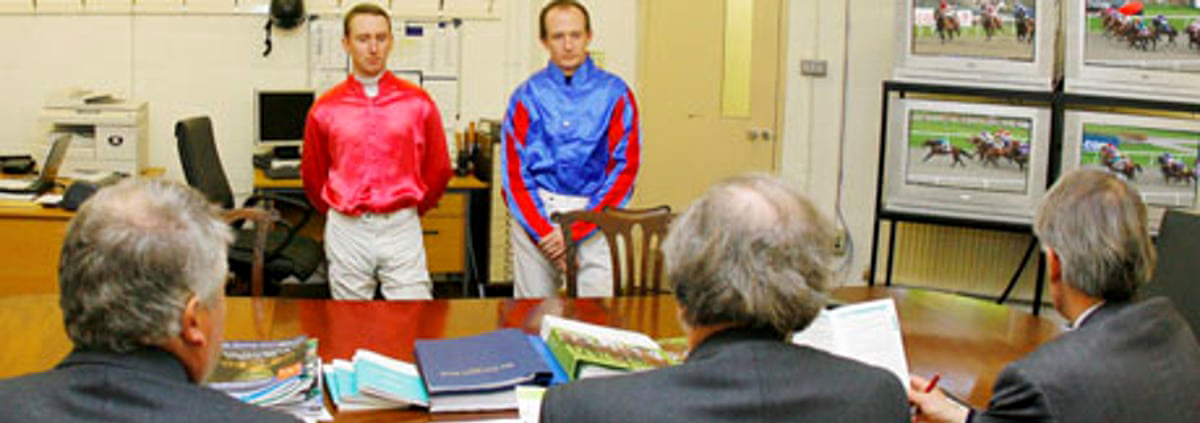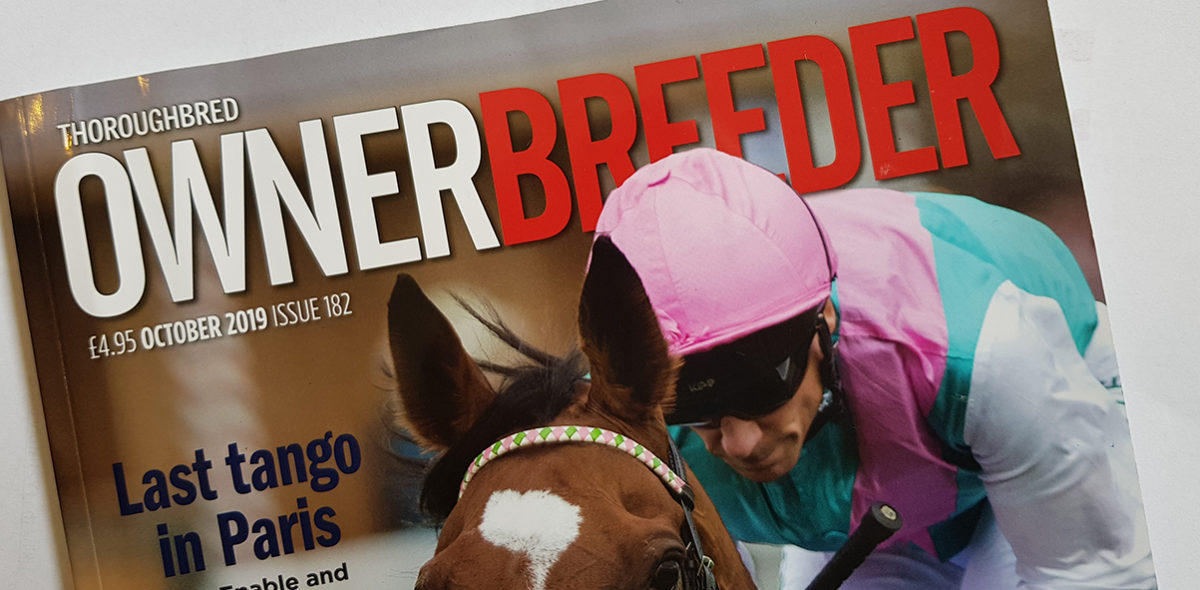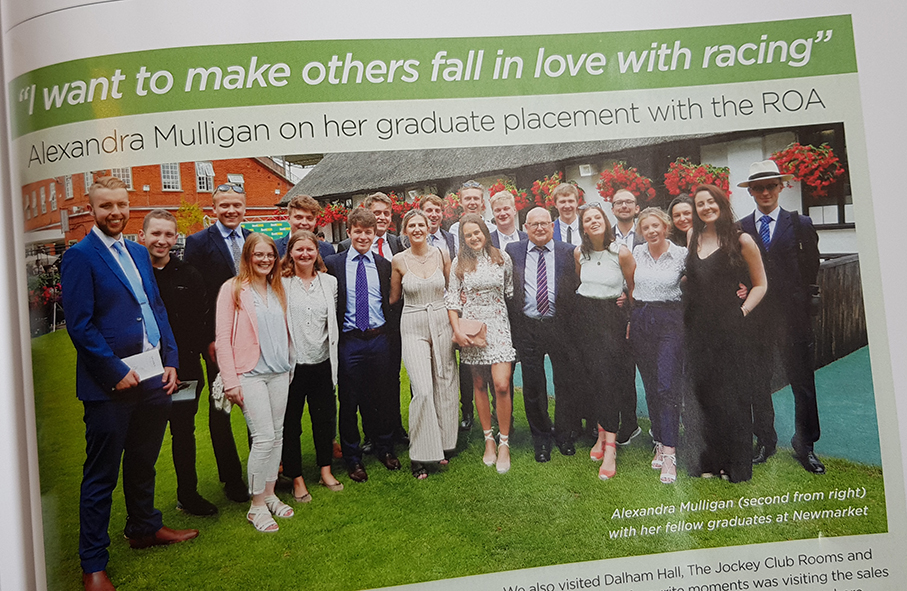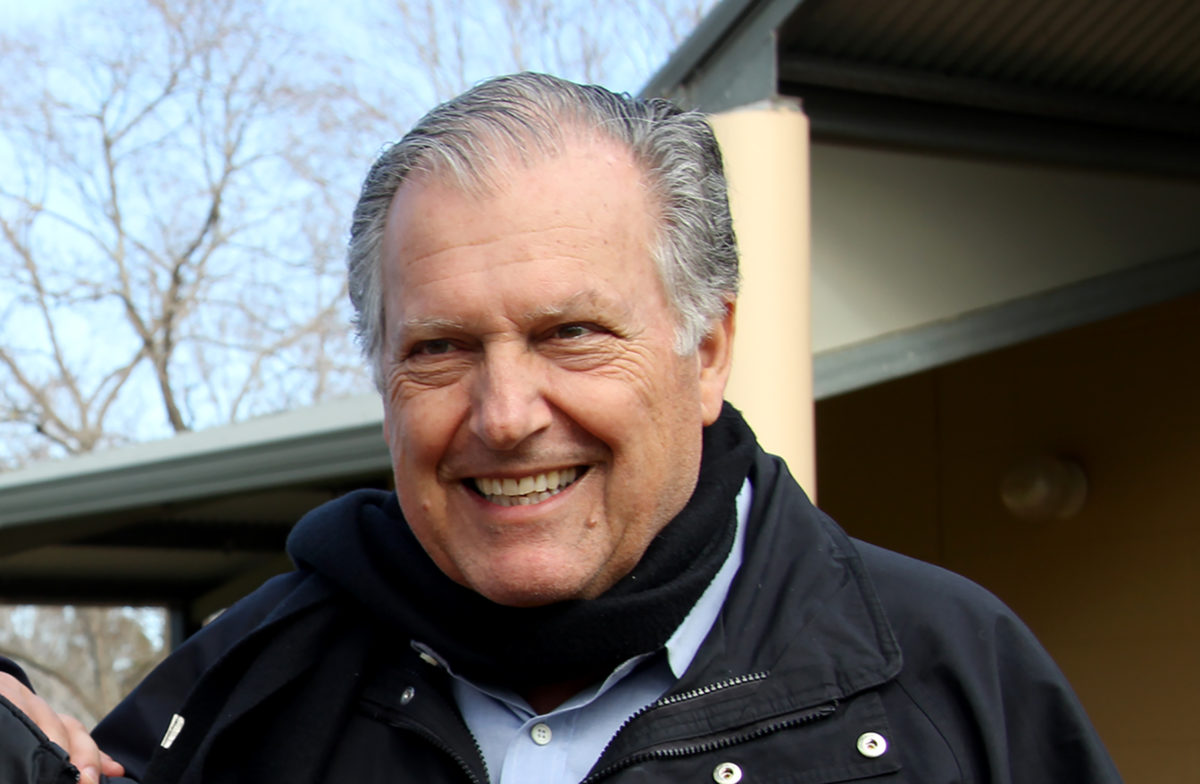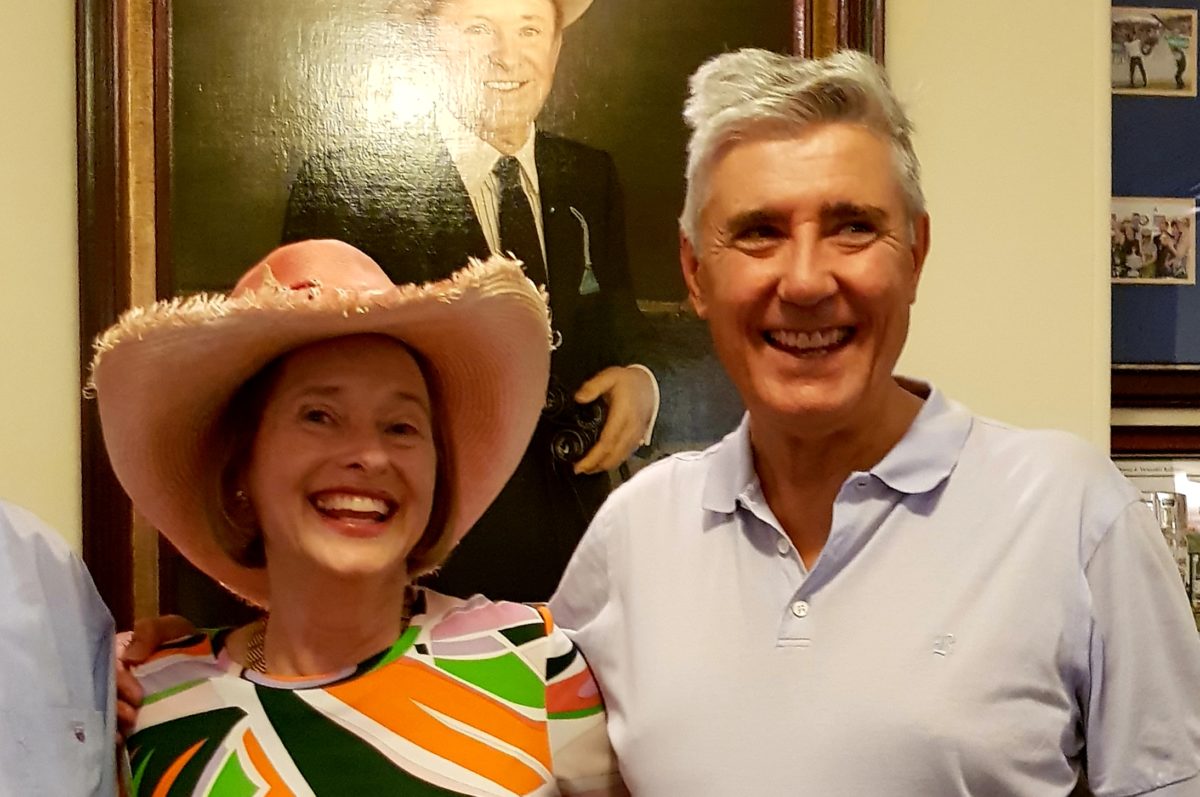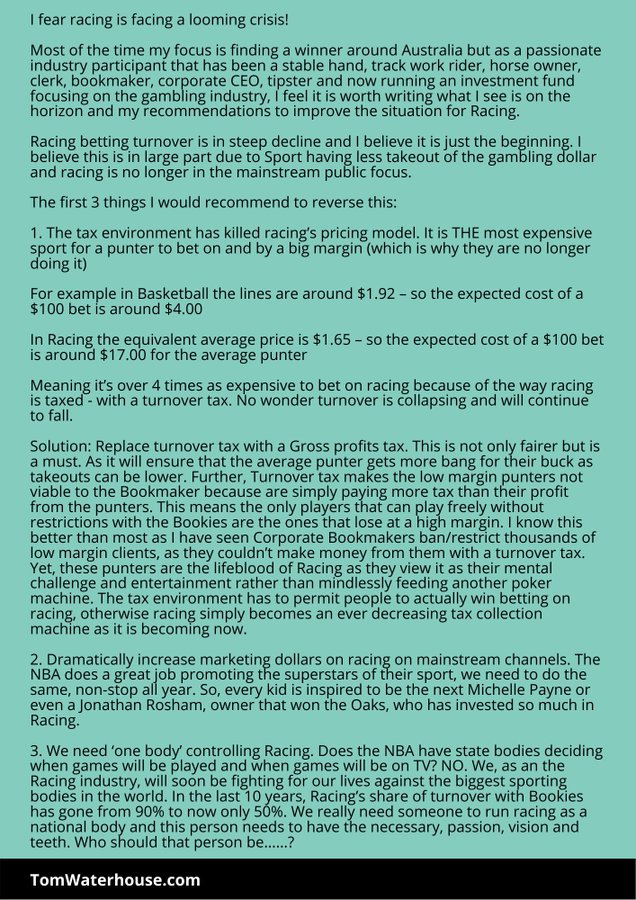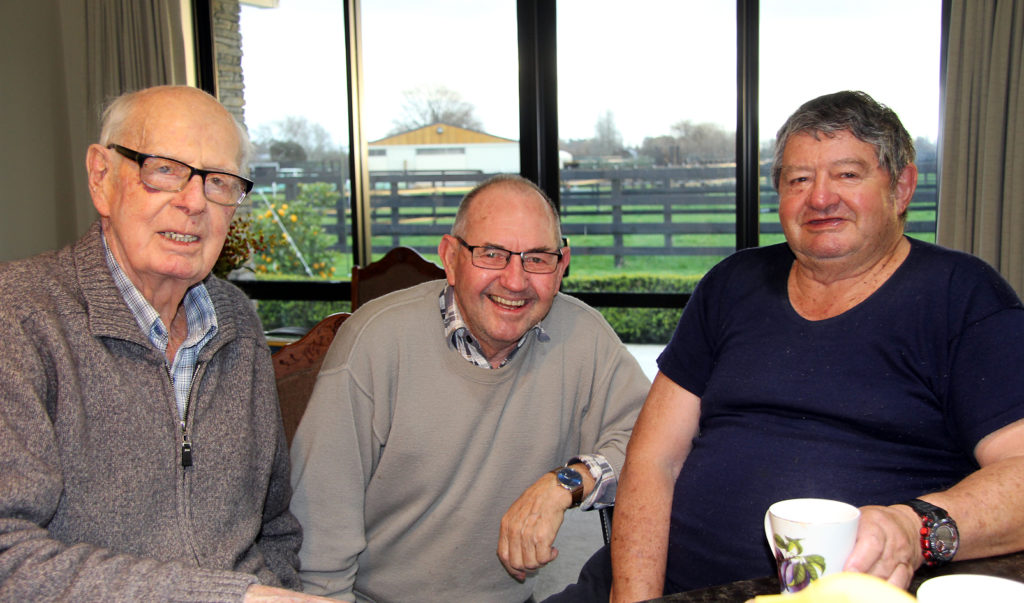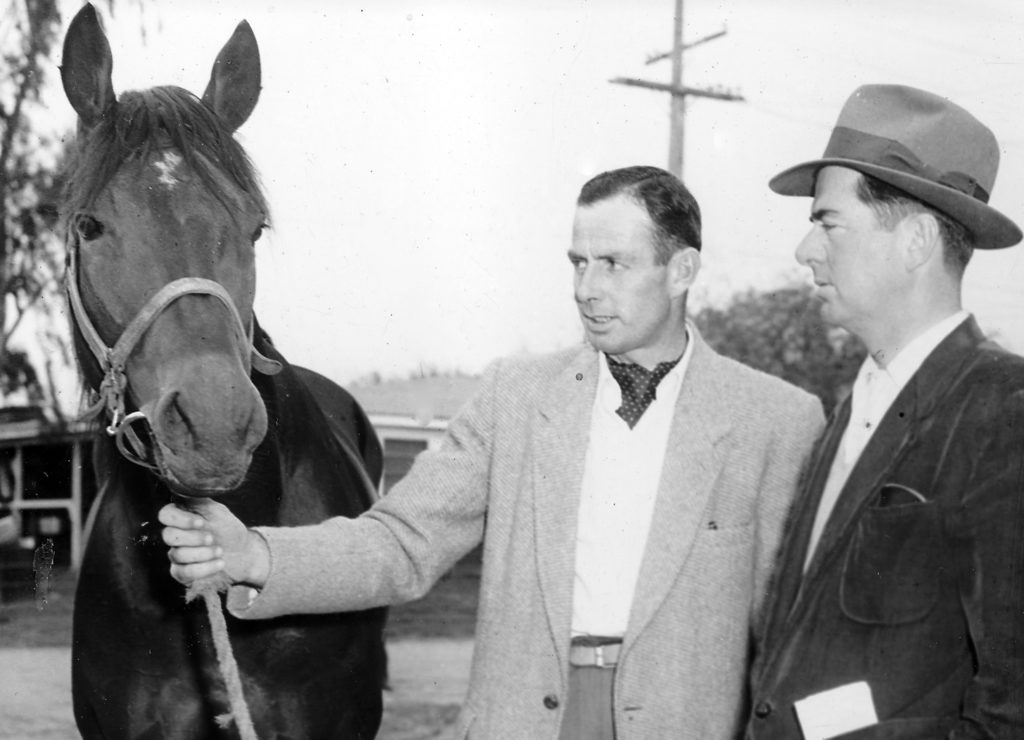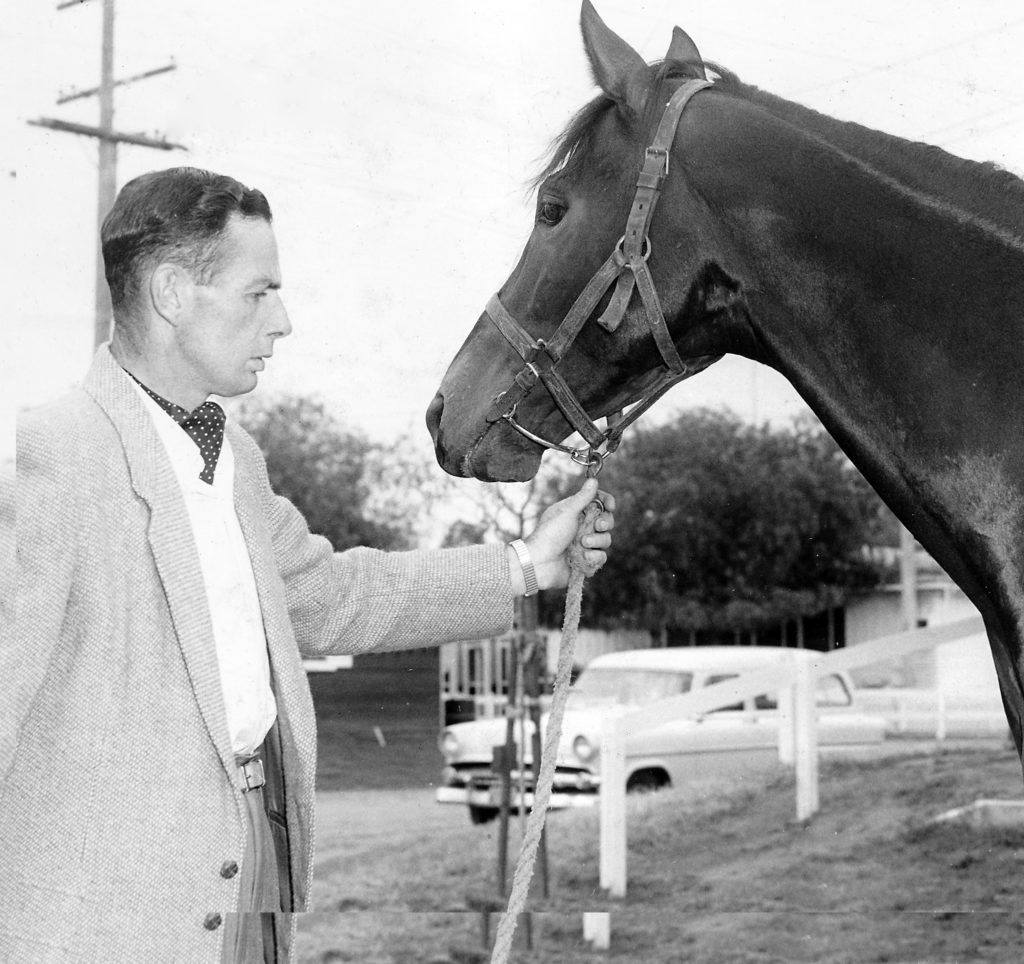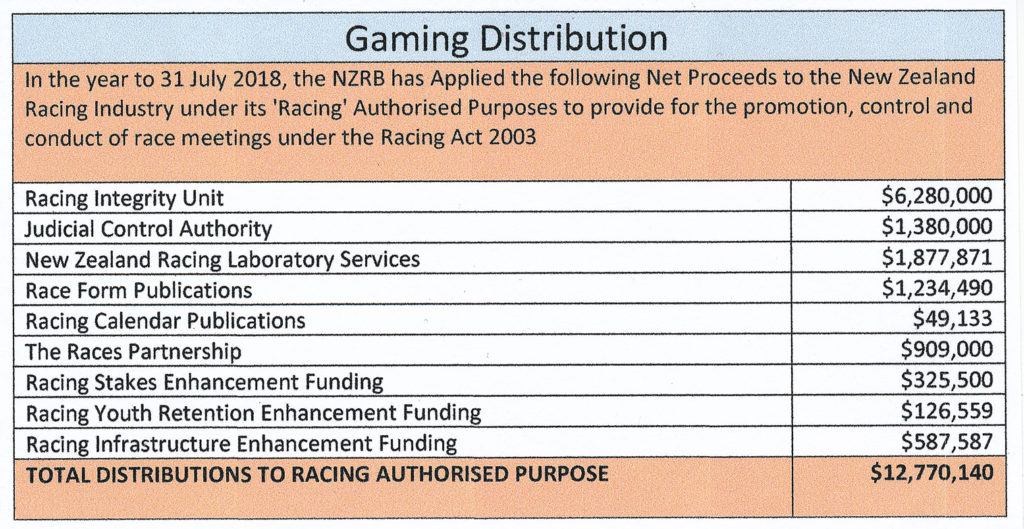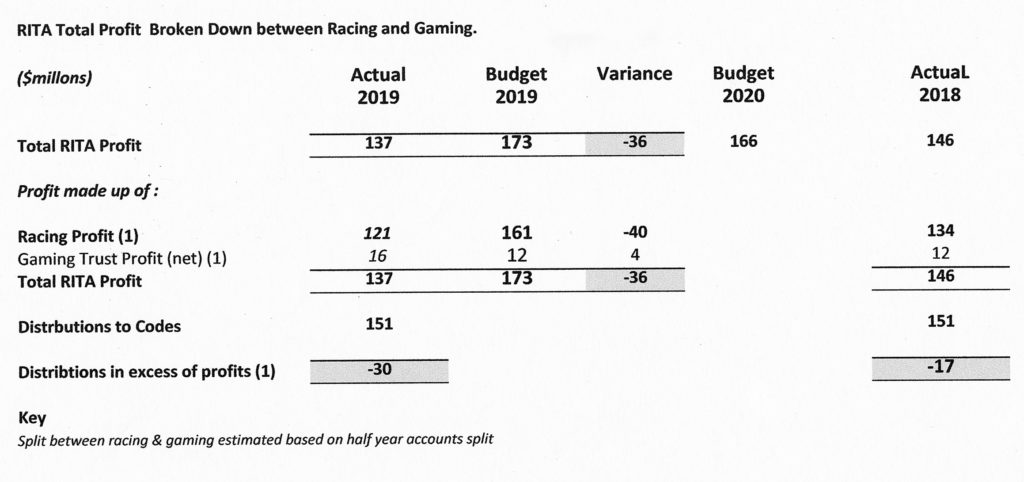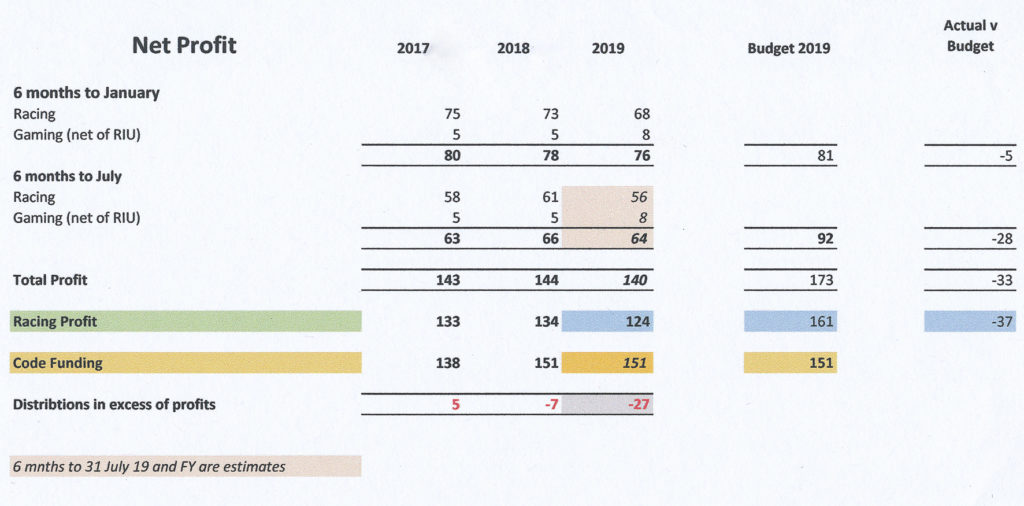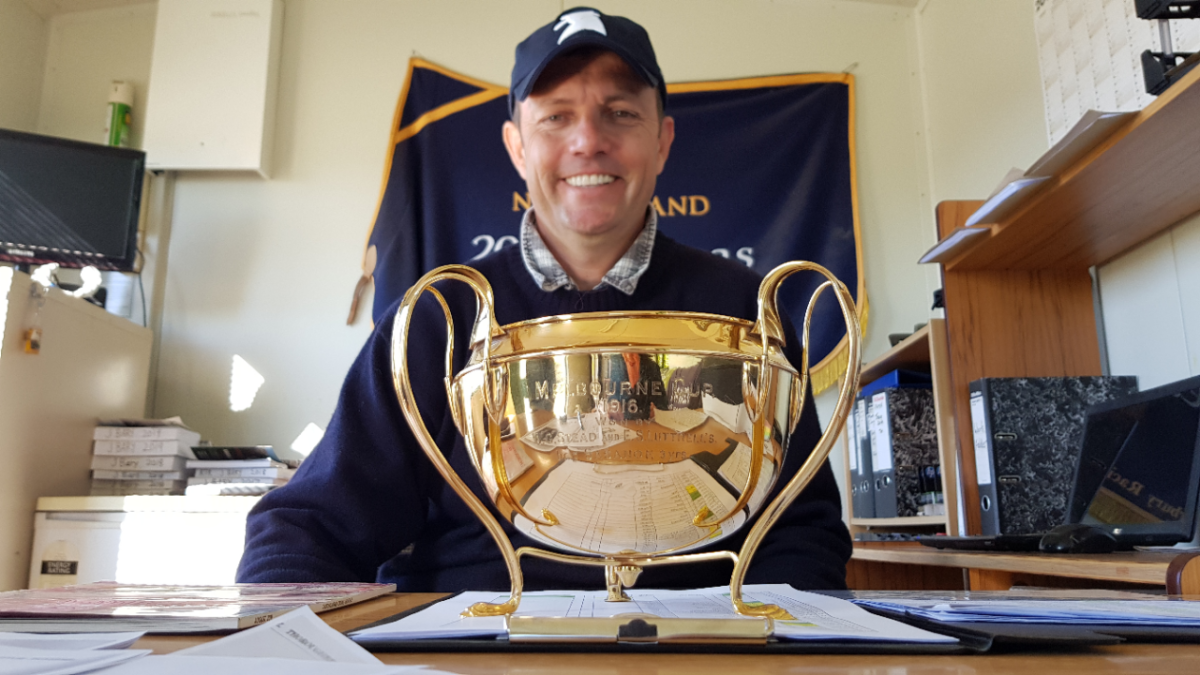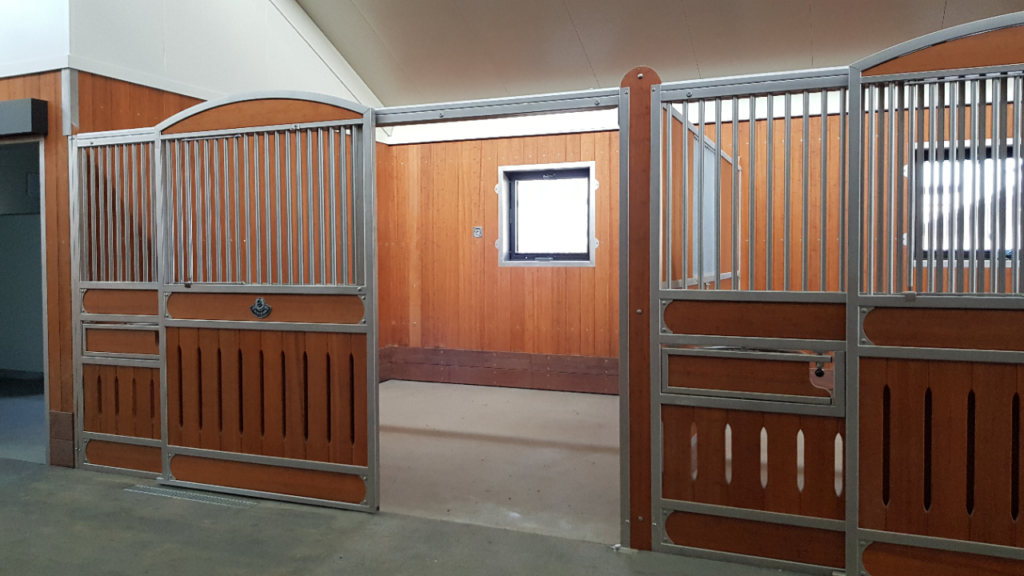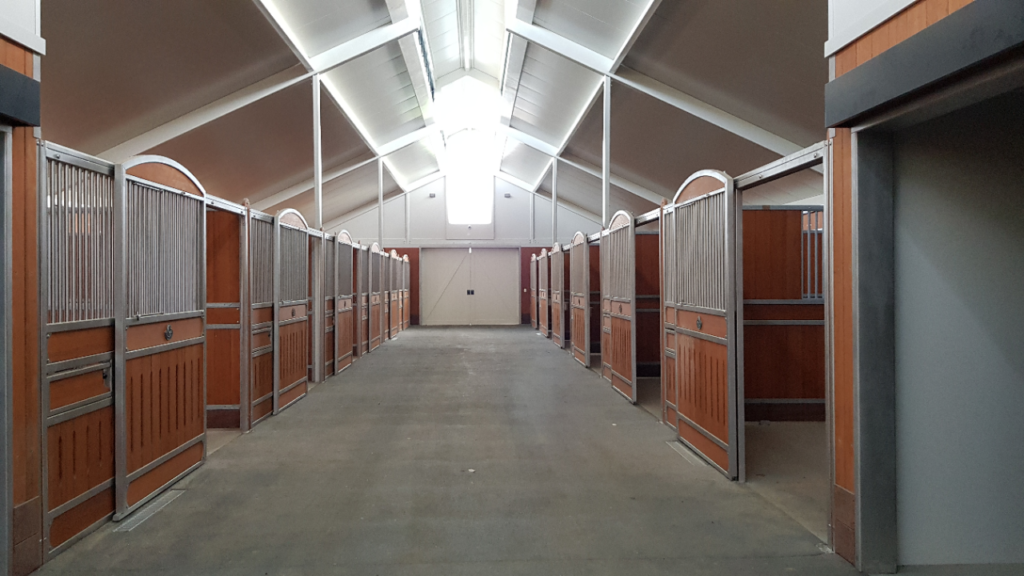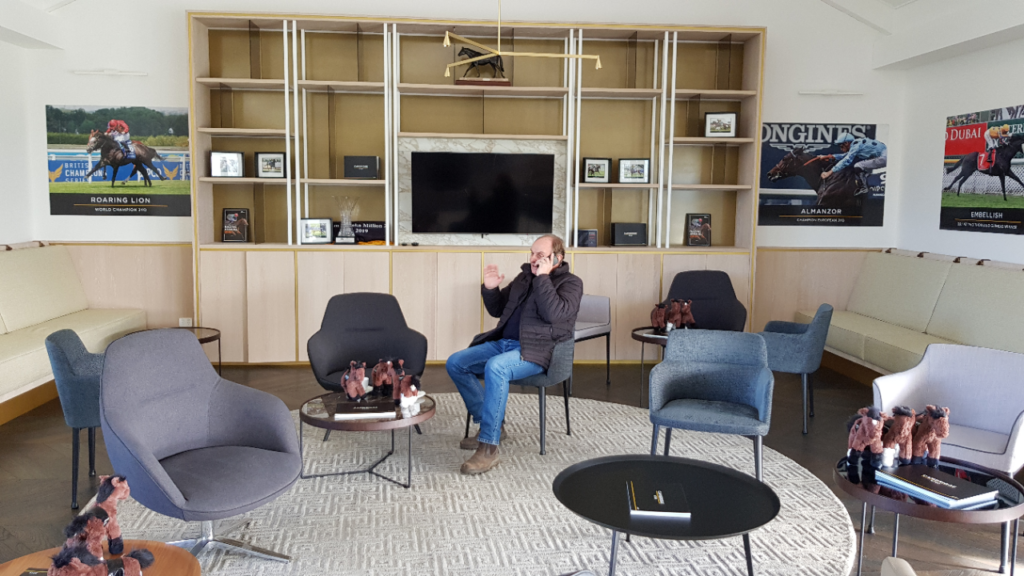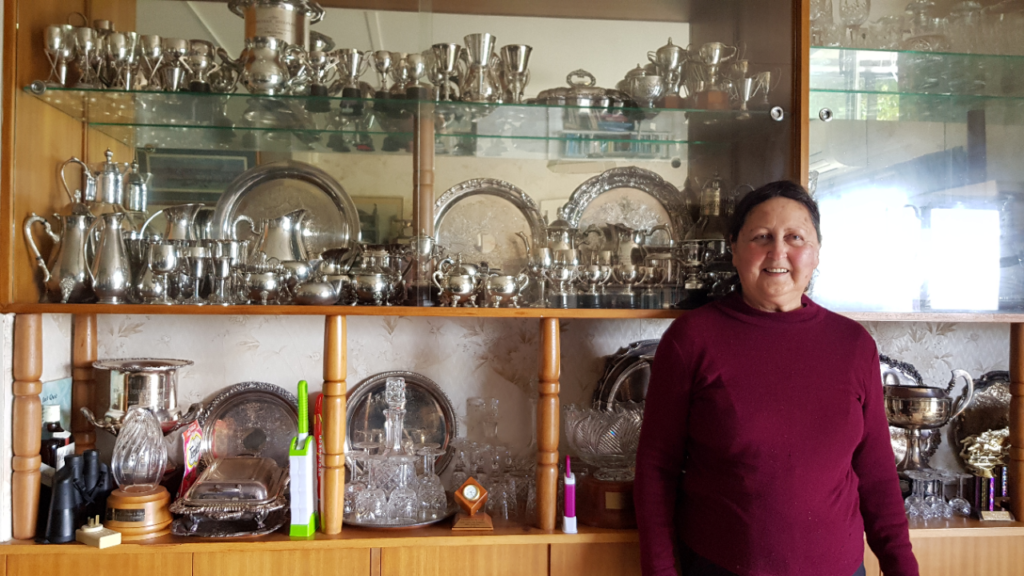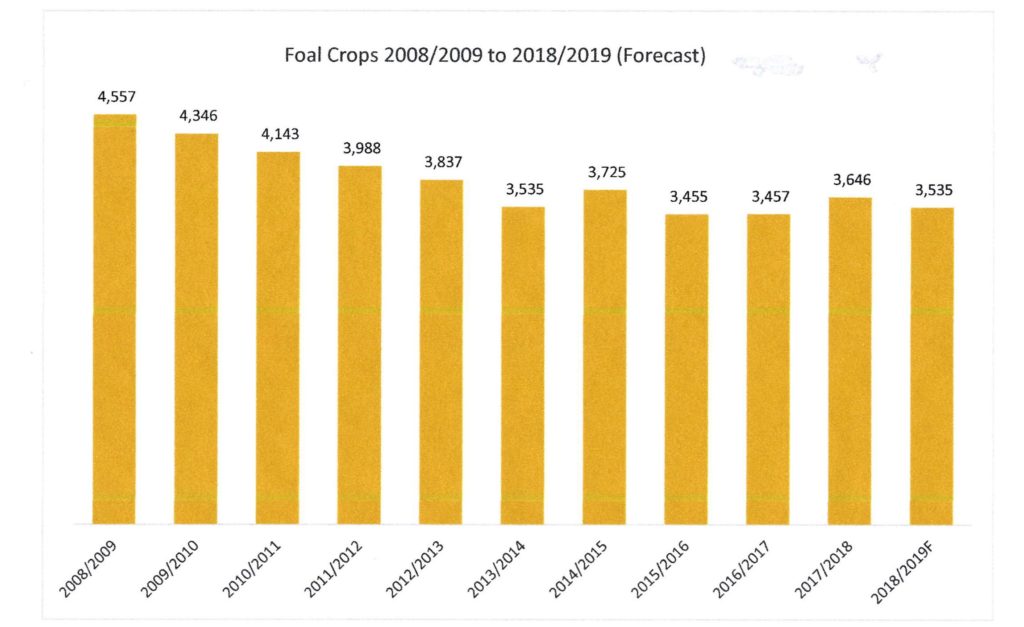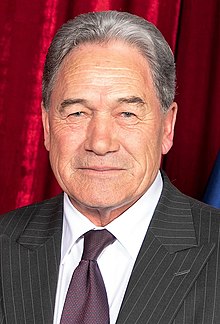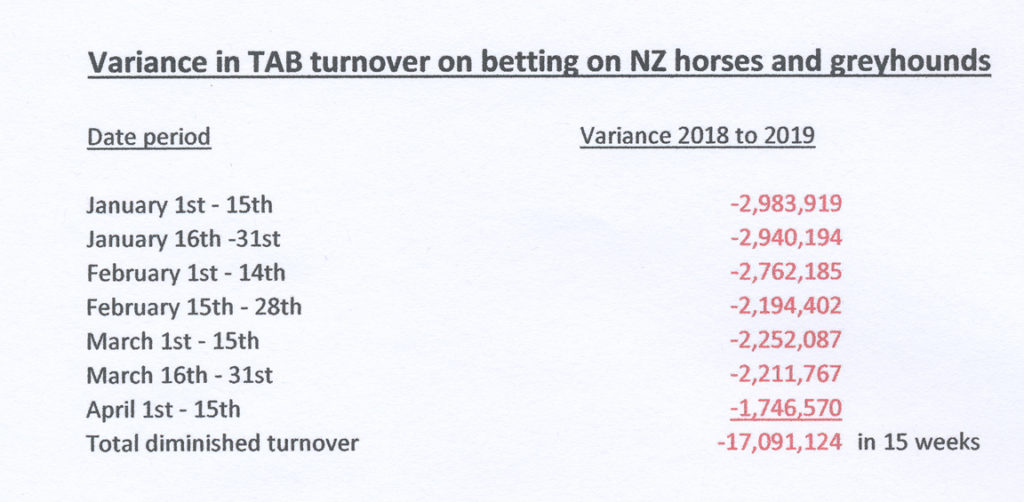by Brian de Lore
Published 31 January 2019
World renown bloodstock agent Hubie de Burgh credits his
success and longevity after 40 years in the business to the early grounding he
was given by the late and great South Australian trainer Colin Hayes.
Making a return visit to New Zealand this week for Book One
of the Karaka Sales, de Burgh under his company name of deBurgh Equine has been
inspecting and buying yearlings for His Highness Sheikh Hamdan Bin Rashid Al
Maktoum of the UAE and Australian syndication company Darby Bloodstock.
It’s 36 years since de Burgh made his National Sales debut
at Trentham in the company of the legendary Colin Hayes and Colin McAlpine, and
31 years since he selected and purchased Zabeel in the first year at Karaka in
1988.
“In Zabeel’s year he was the best-looking horse on the
sales ground,” recalled de Burgh, “any idiot could have bought him
that year. He had a Nuryev head on him; he had balance and he walked
beautifully; he was obviously a very good horse.”
But far from being an ‘idiot,’ the then 33-year-old de
Burgh representing Sheikh Hamdan put his hand-up to fire in the winning bid at
$650,000, a huge amount at the time which today converts on the CPI index to
the equivalent of just under $1.5 million.
“We decided we were not going home without
Zabeel,” continued de Burgh, “and bought him for a lot of money but
there were two horses we wanted that year and Doctor Chapman bought the other
which turned out to be Dr. Grace. We ran out of money otherwise we would have
had the two of them.”
Both horses were by Champion Sire Sir Tristram and were
reared, prepared and offered for sale in the Ra Ora Stud draft on behalf of
racing magnate Robert Sangster. Zabeel was out of the diminutive but quality
Nureyev mare Lady Giselle who was a twin, and Dr. Grace was out of the South
Australian Derby winning mare English Wonder, by Twig Moss.
They were both high-quality yearlings who became
high-quality racehorses and those facts can be verified by this writer who was
privileged to be representing Sangster and Ra Ora Stud in the vendor’s box
behind the auctioneer in what was the debut year for Karaka.
The irony of the sale of those two yearlings is that
Rosehill trainer Dr. Geoff Chapman was underbidder on Zabeel before winning the
bidding war on Dr. Grace. About 20 months later, early in October 1989, Zabeel
defeated Dr.Grace by one length in the $250,000 Group Two Moonee Valley Stakes
over 1600m.
Third in that same race was the New Zealand-bred Courtza,
the previous season’s Golden Slipper winner raced by the late Nick Columb. Of
course, Courtza would subsequently return to Waikato Stud where she was bred
and play a huge role in that stud’s rise to prominence as the dam of Champion
Three-Year-Old and Sire, O’Reilly.
Dr. Grace went on to win 12 races including the ATC Derby,
The BMW, two Manion Cups, a Liston an Underwood and finished his career with a
victory over Super Impose in the Chelmsford, accruing $2.7 million in stakes.
De Burgh was adamant about the Hayes influence, saying,
“The time I spent with Colin in the early days was the most formative of
my career. He was like a second father – I learned so much from him. He was
ruthless on his appraisal of the anatomy of horses.
“On my first trip to New Zealand with Colin and Colin
McAlpine, we looked at a lot of horses at all levels. It was so interesting,
and then we’d be together at Lindsay Park on the gallops discussing it and then
we’d be at dinner discussing it, and everything he talked about was way ahead
of his time.”
De Burgh was lucky to get to Australia at all, let alone
meet Colin Hayes, and after he did arrive in the lucky country his father came
visiting to take him home. He explained, “I first worked for Claiborne
Farm in America and then for Clay Camp who was one of the big consignors at
Saratoga.
“Then I went back to the UK and ended up getting the
job to bring horses to Australia on the shuttle at 48-hours notice – I was at
the Curragh Bloodstock Agency at the time – the guy that was going to take them
burst an eardrum waterskiing just two days before departure so the next day
they told me I was going. I didn’t even know where Australia was.
“Then I fell in love with Australia. I took the horse
down and afterward my father came down and made me come home otherwise I was
intending to stay. When I came back I worked for Jimmy O’Connor at Milluna and
then David Coles at Coles Bloodstock. And while all that was going on I was
following a man that I worshipped and that was Colin Hayes.
“I was 28 when I got the job with Sheikh Hamdan. I was
young but had already lived for five years in Australia by then and I was in
love with the Star Kingdom horses and the first one I bought was Nouvelle Star
– I wanted to get her to Europe – they were very tough horses. She was a
Nolholme mare and mated to Blushing Groom she later produced the first classic
winner for the Sheikh.
“Then we picked out At Talaq which was a horse we
already had and sent him to Colin Hayes. I had never met Colin but I rang him
and he said, ‘yes, of course,’ but he was such a global thinker even then –
years ahead of his time. He was a visionary.
“At Talaq won the Melbourne Cup and then we decided to
come down and buy yearlings and that’s how the whole thing started.
“We bought the 1990 Blue Diamond Stakes winner
Mahaasin out of the Magic Millions Sale. All these events including Zabeel
started this extraordinary relationship between the Hayes family and Sheikh
Hamdan and its gone on unbroken all the way through to David Hayes’s return to
Australia from Hong Kong and beyond, and we’ve had lots of group winners all
the way through.”
And just as de Burgh benefitted from the Hayes mentoring
all those years ago, the knowledge is now being passed on to the next
generation in the form of a young Will Johnson who himself comes with a group
one pedigree.
“Will Johnson is a fantastic young guy, very
knowledgable,” says de Burgh. “He was an assistant trainer to Roger
Varian in England. His father is Tim Johnson – they are the Johnsons that bred
Vain. His mother is a Cox from the family that the Cox Plate was named after so
he was meant to be in this business.
“When you look around the world now there are teams of
young guys coming through that are global people; young people around 30 years
old from France, Ireland and England that are very impressive – very different
to the era when I was in. Will is a very good example of them.
After three or the four days of Book One completed, de
Burgh with Johnson’s assistance had purchased four yearlings – three for Sheikh
Hamdan and one for Darby Racing.
They are Lot 19, a filly by I Am Invincible for $500,000,
Lot 272, a Redoubt’s Choice filly for $200,000, Lot 275, an Iffraaj colt for
$360,000, and for Darby Racing Lot 411, a Savabeel colt for $150,000.
On the difference between buying for Sheikh Hamdan as
opposed to Darby Racing de Burgh commented, “We bought for Darby and were
underbidder on a couple earlier in the sale. Darby’s budget has to be met –
they have to be very strict on what they pay for a horse because they have to
turn around and sell it down. Australia is a world leader on syndication; the
infrastructure, the marketing, the networking; how the whole thing works.
“It really makes owning a racehorse just good fun. You
can sell one percent here and there. In Europe, we are still a little bit too
elitist but are all picking up on the success of companies like Darby Racing
and they now all want to do the same thing – they are 10 years behind.
“Darby has about 90 horses and god-knows how many
owners on its books. A horse can go on their social network site and they are
getting hits within 30 seconds.
And on buying in Australia or New Zealand, de Burgh says,
“I still work off the criteria Colin taught me 40 years ago because when
you are buying horses in the southern hemisphere it’s a very different type you
are seeing than when buying a European horse.
“The big mistake some European buyers make down here
is they buy these big, long-striding European things – they float along and you
think they’re great – but actually, a lot of them don’t have the turn of foot
so while you have to have motion, you don’t have to have these long-striding
things.
“They are a completely different structure down here
because they have more speed. So, I never changed from the basic rules that
Colin taught me.”
Hubie de Burgh still using the Colin Hayes criteria for yearling selection
By Brian de Lore
World renown bloodstock agent Hubie de Burgh credits his
success and longevity after 40 years in the business to the early grounding he
was given by the late and great South Australian trainer Colin Hayes.
Making a return visit to New Zealand this week for Book One
of the Karaka Sales, de Burgh under his company name of deBurgh Equine has been
inspecting and buying yearlings for His Highness Sheikh Hamdan Bin Rashid Al
Maktoum of the UAE and Australian syndication company Darby Bloodstock.
It’s 36 years since de Burgh made his National Sales debut
at Trentham in the company of the legendary Colin Hayes and Colin McAlpine, and
31 years since he selected and purchased Zabeel in the first year at Karaka in
1988.
“In Zabeel’s year he was the best-looking horse on the
sales ground,” recalled de Burgh, “any idiot could have bought him
that year. He had a Nuryev head on him; he had balance and he walked
beautifully; he was obviously a very good horse.”
But far from being an ‘idiot,’ the then 33-year-old de
Burgh representing Sheikh Hamdan put his hand-up to fire in the winning bid at
$650,000, a huge amount at the time which today converts on the CPI index to
the equivalent of just under $1.5 million.
“We decided we were not going home without
Zabeel,” continued de Burgh, “and bought him for a lot of money but
there were two horses we wanted that year and Doctor Chapman bought the other
which turned out to be Dr. Grace. We ran out of money otherwise we would have
had the two of them.”
Both horses were by Champion Sire Sir Tristram and were
reared, prepared and offered for sale in the Ra Ora Stud draft on behalf of
racing magnate Robert Sangster. Zabeel was out of the diminutive but quality
Nureyev mare Lady Giselle who was a twin, and Dr. Grace was out of the South
Australian Derby winning mare English Wonder, by Twig Moss.
They were both high-quality yearlings who became
high-quality racehorses and those facts can be verified by this writer who was
privileged to be representing Sangster and Ra Ora Stud in the vendor’s box
behind the auctioneer in what was the debut year for Karaka.
The irony of the sale of those two yearlings is that
Rosehill trainer Dr. Geoff Chapman was underbidder on Zabeel before winning the
bidding war on Dr. Grace. About 20 months later, early in October 1989, Zabeel
defeated Dr.Grace by one length in the $250,000 Group Two Moonee Valley Stakes
over 1600m.
Third in that same race was the New Zealand-bred Courtza,
the previous season’s Golden Slipper winner raced by the late Nick Columb. Of
course, Courtza would subsequently return to Waikato Stud where she was bred
and play a huge role in that stud’s rise to prominence as the dam of Champion
Three-Year-Old and Sire, O’Reilly.
Dr. Grace went on to win 12 races including the ATC Derby,
The BMW, two Manion Cups, a Liston an Underwood and finished his career with a
victory over Super Impose in the Chelmsford, accruing $2.7 million in stakes.
De Burgh was adamant about the Hayes influence, saying,
“The time I spent with Colin in the early days was the most formative of
my career. He was like a second father – I learned so much from him. He was
ruthless on his appraisal of the anatomy of horses.
“On my first trip to New Zealand with Colin and Colin
McAlpine, we looked at a lot of horses at all levels. It was so interesting,
and then we’d be together at Lindsay Park on the gallops discussing it and then
we’d be at dinner discussing it, and everything he talked about was way ahead
of his time.”
De Burgh was lucky to get to Australia at all, let alone
meet Colin Hayes, and after he did arrive in the lucky country his father came
visiting to take him home. He explained, “I first worked for Claiborne
Farm in America and then for Clay Camp who was one of the big consignors at
Saratoga.
“Then I went back to the UK and ended up getting the
job to bring horses to Australia on the shuttle at 48-hours notice – I was at
the Curragh Bloodstock Agency at the time – the guy that was going to take them
burst an eardrum waterskiing just two days before departure so the next day
they told me I was going. I didn’t even know where Australia was.
“Then I fell in love with Australia. I took the horse
down and afterward my father came down and made me come home otherwise I was
intending to stay. When I came back I worked for Jimmy O’Connor at Milluna and
then David Coles at Coles Bloodstock. And while all that was going on I was
following a man that I worshipped and that was Colin Hayes.
“I was 28 when I got the job with Sheikh Hamdan. I was
young but had already lived for five years in Australia by then and I was in
love with the Star Kingdom horses and the first one I bought was Nouvelle Star
– I wanted to get her to Europe – they were very tough horses. She was a
Nolholme mare and mated to Blushing Groom she later produced the first classic
winner for the Sheikh.
“Then we picked out At Talaq which was a horse we
already had and sent him to Colin Hayes. I had never met Colin but I rang him
and he said, ‘yes, of course,’ but he was such a global thinker even then –
years ahead of his time. He was a visionary.
“At Talaq won the Melbourne Cup and then we decided to
come down and buy yearlings and that’s how the whole thing started.
“We bought the 1990 Blue Diamond Stakes winner
Mahaasin out of the Magic Millions Sale. All these events including Zabeel
started this extraordinary relationship between the Hayes family and Sheikh
Hamdan and its gone on unbroken all the way through to David Hayes’s return to
Australia from Hong Kong and beyond, and we’ve had lots of group winners all
the way through.”
And just as de Burgh benefitted from the Hayes mentoring
all those years ago, the knowledge is now being passed on to the next
generation in the form of a young Will Johnson who himself comes with a group
one pedigree.
“Will Johnson is a fantastic young guy, very
knowledgable,” says de Burgh. “He was an assistant trainer to Roger
Varian in England. His father is Tim Johnson – they are the Johnsons that bred
Vain. His mother is a Cox from the family that the Cox Plate was named after so
he was meant to be in this business.
“When you look around the world now there are teams of
young guys coming through that are global people; young people around 30 years
old from France, Ireland and England that are very impressive – very different
to the era when I was in. Will is a very good example of them.
After three or the four days of Book One completed, de
Burgh with Johnson’s assistance had purchased four yearlings – three for Sheikh
Hamdan and one for Darby Racing.
They are Lot 19, a filly by I Am Invincible for $500,000,
Lot 272, a Redoubt’s Choice filly for $200,000, Lot 275, an Iffraaj colt for
$360,000, and for Darby Racing Lot 411, a Savabeel colt for $150,000.
On the difference between buying for Sheikh Hamdan as
opposed to Darby Racing de Burgh commented, “We bought for Darby and were
underbidder on a couple earlier in the sale. Darby’s budget has to be met –
they have to be very strict on what they pay for a horse because they have to
turn around and sell it down. Australia is a world leader on syndication; the
infrastructure, the marketing, the networking; how the whole thing works.
“It really makes owning a racehorse just good fun. You
can sell one percent here and there. In Europe, we are still a little bit too
elitist but are all picking up on the success of companies like Darby Racing
and they now all want to do the same thing – they are 10 years behind.
“Darby has about 90 horses and god-knows how many
owners on its books. A horse can go on their social network site and they are
getting hits within 30 seconds.
And on buying in Australia or New Zealand, de Burgh says,
“I still work off the criteria Colin taught me 40 years ago because when
you are buying horses in the southern hemisphere it’s a very different type you
are seeing than when buying a European horse.
“The big mistake some European buyers make down here
is they buy these big, long-striding European things – they float along and you
think they’re great – but actually, a lot of them don’t have the turn of foot
so while you have to have motion, you don’t have to have these long-striding
things.
“They are a completely different structure down here
because they have more speed. So, I never changed from the basic rules that
Colin taught me.”
Hubie de Burgh still using the Colin Hayes criteria for yearling selection
By Brian de Lore
World renown bloodstock agent Hubie de Burgh credits his
success and longevity after 40 years in the business to the early grounding he
was given by the late and great South Australian trainer Colin Hayes.
Making a return visit to New Zealand this week for Book One
of the Karaka Sales, de Burgh under his company name of deBurgh Equine has been
inspecting and buying yearlings for His Highness Sheikh Hamdan Bin Rashid Al
Maktoum of the UAE and Australian syndication company Darby Bloodstock.
It’s 36 years since de Burgh made his National Sales debut
at Trentham in the company of the legendary Colin Hayes and Colin McAlpine, and
31 years since he selected and purchased Zabeel in the first year at Karaka in
1988.
“In Zabeel’s year he was the best-looking horse on the
sales ground,” recalled de Burgh, “any idiot could have bought him
that year. He had a Nuryev head on him; he had balance and he walked
beautifully; he was obviously a very good horse.”
But far from being an ‘idiot,’ the then 33-year-old de
Burgh representing Sheikh Hamdan put his hand-up to fire in the winning bid at
$650,000, a huge amount at the time which today converts on the CPI index to
the equivalent of just under $1.5 million.
“We decided we were not going home without
Zabeel,” continued de Burgh, “and bought him for a lot of money but
there were two horses we wanted that year and Doctor Chapman bought the other
which turned out to be Dr. Grace. We ran out of money otherwise we would have
had the two of them.”
Both horses were by Champion Sire Sir Tristram and were
reared, prepared and offered for sale in the Ra Ora Stud draft on behalf of
racing magnate Robert Sangster. Zabeel was out of the diminutive but quality
Nureyev mare Lady Giselle who was a twin, and Dr. Grace was out of the South
Australian Derby winning mare English Wonder, by Twig Moss.
They were both high-quality yearlings who became
high-quality racehorses and those facts can be verified by this writer who was
privileged to be representing Sangster and Ra Ora Stud in the vendor’s box
behind the auctioneer in what was the debut year for Karaka.
The irony of the sale of those two yearlings is that
Rosehill trainer Dr. Geoff Chapman was underbidder on Zabeel before winning the
bidding war on Dr. Grace. About 20 months later, early in October 1989, Zabeel
defeated Dr.Grace by one length in the $250,000 Group Two Moonee Valley Stakes
over 1600m.
Third in that same race was the New Zealand-bred Courtza,
the previous season’s Golden Slipper winner raced by the late Nick Columb. Of
course, Courtza would subsequently return to Waikato Stud where she was bred
and play a huge role in that stud’s rise to prominence as the dam of Champion
Three-Year-Old and Sire, O’Reilly.
Dr. Grace went on to win 12 races including the ATC Derby,
The BMW, two Manion Cups, a Liston an Underwood and finished his career with a
victory over Super Impose in the Chelmsford, accruing $2.7 million in stakes.
De Burgh was adamant about the Hayes influence, saying,
“The time I spent with Colin in the early days was the most formative of
my career. He was like a second father – I learned so much from him. He was
ruthless on his appraisal of the anatomy of horses.
“On my first trip to New Zealand with Colin and Colin
McAlpine, we looked at a lot of horses at all levels. It was so interesting,
and then we’d be together at Lindsay Park on the gallops discussing it and then
we’d be at dinner discussing it, and everything he talked about was way ahead
of his time.”
De Burgh was lucky to get to Australia at all, let alone
meet Colin Hayes, and after he did arrive in the lucky country his father came
visiting to take him home. He explained, “I first worked for Claiborne
Farm in America and then for Clay Camp who was one of the big consignors at
Saratoga.
“Then I went back to the UK and ended up getting the
job to bring horses to Australia on the shuttle at 48-hours notice – I was at
the Curragh Bloodstock Agency at the time – the guy that was going to take them
burst an eardrum waterskiing just two days before departure so the next day
they told me I was going. I didn’t even know where Australia was.
“Then I fell in love with Australia. I took the horse
down and afterward my father came down and made me come home otherwise I was
intending to stay. When I came back I worked for Jimmy O’Connor at Milluna and
then David Coles at Coles Bloodstock. And while all that was going on I was
following a man that I worshipped and that was Colin Hayes.
“I was 28 when I got the job with Sheikh Hamdan. I was
young but had already lived for five years in Australia by then and I was in
love with the Star Kingdom horses and the first one I bought was Nouvelle Star
– I wanted to get her to Europe – they were very tough horses. She was a
Nolholme mare and mated to Blushing Groom she later produced the first classic
winner for the Sheikh.
“Then we picked out At Talaq which was a horse we
already had and sent him to Colin Hayes. I had never met Colin but I rang him
and he said, ‘yes, of course,’ but he was such a global thinker even then –
years ahead of his time. He was a visionary.
“At Talaq won the Melbourne Cup and then we decided to
come down and buy yearlings and that’s how the whole thing started.
“We bought the 1990 Blue Diamond Stakes winner
Mahaasin out of the Magic Millions Sale. All these events including Zabeel
started this extraordinary relationship between the Hayes family and Sheikh
Hamdan and its gone on unbroken all the way through to David Hayes’s return to
Australia from Hong Kong and beyond, and we’ve had lots of group winners all
the way through.”
And just as de Burgh benefitted from the Hayes mentoring
all those years ago, the knowledge is now being passed on to the next
generation in the form of a young Will Johnson who himself comes with a group
one pedigree.
“Will Johnson is a fantastic young guy, very
knowledgable,” says de Burgh. “He was an assistant trainer to Roger
Varian in England. His father is Tim Johnson – they are the Johnsons that bred
Vain. His mother is a Cox from the family that the Cox Plate was named after so
he was meant to be in this business.
“When you look around the world now there are teams of
young guys coming through that are global people; young people around 30 years
old from France, Ireland and England that are very impressive – very different
to the era when I was in. Will is a very good example of them.
After three or the four days of Book One completed, de
Burgh with Johnson’s assistance had purchased four yearlings – three for Sheikh
Hamdan and one for Darby Racing.
They are Lot 19, a filly by I Am Invincible for $500,000,
Lot 272, a Redoubt’s Choice filly for $200,000, Lot 275, an Iffraaj colt for
$360,000, and for Darby Racing Lot 411, a Savabeel colt for $150,000.
On the difference between buying for Sheikh Hamdan as
opposed to Darby Racing de Burgh commented, “We bought for Darby and were
underbidder on a couple earlier in the sale. Darby’s budget has to be met –
they have to be very strict on what they pay for a horse because they have to
turn around and sell it down. Australia is a world leader on syndication; the
infrastructure, the marketing, the networking; how the whole thing works.
“It really makes owning a racehorse just good fun. You
can sell one percent here and there. In Europe, we are still a little bit too
elitist but are all picking up on the success of companies like Darby Racing
and they now all want to do the same thing – they are 10 years behind.
“Darby has about 90 horses and god-knows how many
owners on its books. A horse can go on their social network site and they are
getting hits within 30 seconds.
And on buying in Australia or New Zealand, de Burgh says,
“I still work off the criteria Colin taught me 40 years ago because when
you are buying horses in the southern hemisphere it’s a very different type you
are seeing than when buying a European horse.
“The big mistake some European buyers make down here
is they buy these big, long-striding European things – they float along and you
think they’re great – but actually, a lot of them don’t have the turn of foot
so while you have to have motion, you don’t have to have these long-striding
things.
“They are a completely different structure down here
because they have more speed. So, I never changed from the basic rules that
Colin taught me.”
Hubie de Burgh still using the Colin Hayes criteria for yearling selection
By Brian de Lore
World renown bloodstock agent Hubie de Burgh credits his
success and longevity after 40 years in the business to the early grounding he
was given by the late and great South Australian trainer Colin Hayes.
Making a return visit to New Zealand this week for Book One
of the Karaka Sales, de Burgh under his company name of deBurgh Equine has been
inspecting and buying yearlings for His Highness Sheikh Hamdan Bin Rashid Al
Maktoum of the UAE and Australian syndication company Darby Bloodstock.
It’s 36 years since de Burgh made his National Sales debut
at Trentham in the company of the legendary Colin Hayes and Colin McAlpine, and
31 years since he selected and purchased Zabeel in the first year at Karaka in
1988.
“In Zabeel’s year he was the best-looking horse on the
sales ground,” recalled de Burgh, “any idiot could have bought him
that year. He had a Nuryev head on him; he had balance and he walked
beautifully; he was obviously a very good horse.”
But far from being an ‘idiot,’ the then 33-year-old de
Burgh representing Sheikh Hamdan put his hand-up to fire in the winning bid at
$650,000, a huge amount at the time which today converts on the CPI index to
the equivalent of just under $1.5 million.
“We decided we were not going home without
Zabeel,” continued de Burgh, “and bought him for a lot of money but
there were two horses we wanted that year and Doctor Chapman bought the other
which turned out to be Dr. Grace. We ran out of money otherwise we would have
had the two of them.”
Both horses were by Champion Sire Sir Tristram and were
reared, prepared and offered for sale in the Ra Ora Stud draft on behalf of
racing magnate Robert Sangster. Zabeel was out of the diminutive but quality
Nureyev mare Lady Giselle who was a twin, and Dr. Grace was out of the South
Australian Derby winning mare English Wonder, by Twig Moss.
They were both high-quality yearlings who became
high-quality racehorses and those facts can be verified by this writer who was
privileged to be representing Sangster and Ra Ora Stud in the vendor’s box
behind the auctioneer in what was the debut year for Karaka.
The irony of the sale of those two yearlings is that
Rosehill trainer Dr. Geoff Chapman was underbidder on Zabeel before winning the
bidding war on Dr. Grace. About 20 months later, early in October 1989, Zabeel
defeated Dr.Grace by one length in the $250,000 Group Two Moonee Valley Stakes
over 1600m.
Third in that same race was the New Zealand-bred Courtza,
the previous season’s Golden Slipper winner raced by the late Nick Columb. Of
course, Courtza would subsequently return to Waikato Stud where she was bred
and play a huge role in that stud’s rise to prominence as the dam of Champion
Three-Year-Old and Sire, O’Reilly.
Dr. Grace went on to win 12 races including the ATC Derby,
The BMW, two Manion Cups, a Liston an Underwood and finished his career with a
victory over Super Impose in the Chelmsford, accruing $2.7 million in stakes.
De Burgh was adamant about the Hayes influence, saying,
“The time I spent with Colin in the early days was the most formative of
my career. He was like a second father – I learned so much from him. He was
ruthless on his appraisal of the anatomy of horses.
“On my first trip to New Zealand with Colin and Colin
McAlpine, we looked at a lot of horses at all levels. It was so interesting,
and then we’d be together at Lindsay Park on the gallops discussing it and then
we’d be at dinner discussing it, and everything he talked about was way ahead
of his time.”
De Burgh was lucky to get to Australia at all, let alone
meet Colin Hayes, and after he did arrive in the lucky country his father came
visiting to take him home. He explained, “I first worked for Claiborne
Farm in America and then for Clay Camp who was one of the big consignors at
Saratoga.
“Then I went back to the UK and ended up getting the
job to bring horses to Australia on the shuttle at 48-hours notice – I was at
the Curragh Bloodstock Agency at the time – the guy that was going to take them
burst an eardrum waterskiing just two days before departure so the next day
they told me I was going. I didn’t even know where Australia was.
“Then I fell in love with Australia. I took the horse
down and afterward my father came down and made me come home otherwise I was
intending to stay. When I came back I worked for Jimmy O’Connor at Milluna and
then David Coles at Coles Bloodstock. And while all that was going on I was
following a man that I worshipped and that was Colin Hayes.
“I was 28 when I got the job with Sheikh Hamdan. I was
young but had already lived for five years in Australia by then and I was in
love with the Star Kingdom horses and the first one I bought was Nouvelle Star
– I wanted to get her to Europe – they were very tough horses. She was a
Nolholme mare and mated to Blushing Groom she later produced the first classic
winner for the Sheikh.
“Then we picked out At Talaq which was a horse we
already had and sent him to Colin Hayes. I had never met Colin but I rang him
and he said, ‘yes, of course,’ but he was such a global thinker even then –
years ahead of his time. He was a visionary.
“At Talaq won the Melbourne Cup and then we decided to
come down and buy yearlings and that’s how the whole thing started.
“We bought the 1990 Blue Diamond Stakes winner
Mahaasin out of the Magic Millions Sale. All these events including Zabeel
started this extraordinary relationship between the Hayes family and Sheikh
Hamdan and its gone on unbroken all the way through to David Hayes’s return to
Australia from Hong Kong and beyond, and we’ve had lots of group winners all
the way through.”
And just as de Burgh benefitted from the Hayes mentoring
all those years ago, the knowledge is now being passed on to the next
generation in the form of a young Will Johnson who himself comes with a group
one pedigree.
“Will Johnson is a fantastic young guy, very
knowledgable,” says de Burgh. “He was an assistant trainer to Roger
Varian in England. His father is Tim Johnson – they are the Johnsons that bred
Vain. His mother is a Cox from the family that the Cox Plate was named after so
he was meant to be in this business.
“When you look around the world now there are teams of
young guys coming through that are global people; young people around 30 years
old from France, Ireland and England that are very impressive – very different
to the era when I was in. Will is a very good example of them.
After three or the four days of Book One completed, de
Burgh with Johnson’s assistance had purchased four yearlings – three for Sheikh
Hamdan and one for Darby Racing.
They are Lot 19, a filly by I Am Invincible for $500,000,
Lot 272, a Redoubt’s Choice filly for $200,000, Lot 275, an Iffraaj colt for
$360,000, and for Darby Racing Lot 411, a Savabeel colt for $150,000.
On the difference between buying for Sheikh Hamdan as
opposed to Darby Racing de Burgh commented, “We bought for Darby and were
underbidder on a couple earlier in the sale. Darby’s budget has to be met –
they have to be very strict on what they pay for a horse because they have to
turn around and sell it down. Australia is a world leader on syndication; the
infrastructure, the marketing, the networking; how the whole thing works.
“It really makes owning a racehorse just good fun. You
can sell one percent here and there. In Europe, we are still a little bit too
elitist but are all picking up on the success of companies like Darby Racing
and they now all want to do the same thing – they are 10 years behind.
“Darby has about 90 horses and god-knows how many
owners on its books. A horse can go on their social network site and they are
getting hits within 30 seconds.
And on buying in Australia or New Zealand, de Burgh says,
“I still work off the criteria Colin taught me 40 years ago because when
you are buying horses in the southern hemisphere it’s a very different type you
are seeing than when buying a European horse.
“The big mistake some European buyers make down here
is they buy these big, long-striding European things – they float along and you
think they’re great – but actually, a lot of them don’t have the turn of foot
so while you have to have motion, you don’t have to have these long-striding
things.
“They are a completely different structure down here
because they have more speed. So, I never changed from the basic rules that
Colin taught me.”
Hubie de Burgh still using the Colin Hayes criteria for yearling selection
By Brian de Lore
World renown bloodstock agent Hubie de Burgh credits his
success and longevity after 40 years in the business to the early grounding he
was given by the late and great South Australian trainer Colin Hayes.
Making a return visit to New Zealand this week for Book One
of the Karaka Sales, de Burgh under his company name of deBurgh Equine has been
inspecting and buying yearlings for His Highness Sheikh Hamdan Bin Rashid Al
Maktoum of the UAE and Australian syndication company Darby Bloodstock.
It’s 36 years since de Burgh made his National Sales debut
at Trentham in the company of the legendary Colin Hayes and Colin McAlpine, and
31 years since he selected and purchased Zabeel in the first year at Karaka in
1988.
“In Zabeel’s year he was the best-looking horse on the
sales ground,” recalled de Burgh, “any idiot could have bought him
that year. He had a Nuryev head on him; he had balance and he walked
beautifully; he was obviously a very good horse.”
But far from being an ‘idiot,’ the then 33-year-old de
Burgh representing Sheikh Hamdan put his hand-up to fire in the winning bid at
$650,000, a huge amount at the time which today converts on the CPI index to
the equivalent of just under $1.5 million.
“We decided we were not going home without
Zabeel,” continued de Burgh, “and bought him for a lot of money but
there were two horses we wanted that year and Doctor Chapman bought the other
which turned out to be Dr. Grace. We ran out of money otherwise we would have
had the two of them.”
Both horses were by Champion Sire Sir Tristram and were
reared, prepared and offered for sale in the Ra Ora Stud draft on behalf of
racing magnate Robert Sangster. Zabeel was out of the diminutive but quality
Nureyev mare Lady Giselle who was a twin, and Dr. Grace was out of the South
Australian Derby winning mare English Wonder, by Twig Moss.
They were both high-quality yearlings who became
high-quality racehorses and those facts can be verified by this writer who was
privileged to be representing Sangster and Ra Ora Stud in the vendor’s box
behind the auctioneer in what was the debut year for Karaka.
The irony of the sale of those two yearlings is that
Rosehill trainer Dr. Geoff Chapman was underbidder on Zabeel before winning the
bidding war on Dr. Grace. About 20 months later, early in October 1989, Zabeel
defeated Dr.Grace by one length in the $250,000 Group Two Moonee Valley Stakes
over 1600m.
Third in that same race was the New Zealand-bred Courtza,
the previous season’s Golden Slipper winner raced by the late Nick Columb. Of
course, Courtza would subsequently return to Waikato Stud where she was bred
and play a huge role in that stud’s rise to prominence as the dam of Champion
Three-Year-Old and Sire, O’Reilly.
Dr. Grace went on to win 12 races including the ATC Derby,
The BMW, two Manion Cups, a Liston an Underwood and finished his career with a
victory over Super Impose in the Chelmsford, accruing $2.7 million in stakes.
De Burgh was adamant about the Hayes influence, saying,
“The time I spent with Colin in the early days was the most formative of
my career. He was like a second father – I learned so much from him. He was
ruthless on his appraisal of the anatomy of horses.
“On my first trip to New Zealand with Colin and Colin
McAlpine, we looked at a lot of horses at all levels. It was so interesting,
and then we’d be together at Lindsay Park on the gallops discussing it and then
we’d be at dinner discussing it, and everything he talked about was way ahead
of his time.”
De Burgh was lucky to get to Australia at all, let alone
meet Colin Hayes, and after he did arrive in the lucky country his father came
visiting to take him home. He explained, “I first worked for Claiborne
Farm in America and then for Clay Camp who was one of the big consignors at
Saratoga.
“Then I went back to the UK and ended up getting the
job to bring horses to Australia on the shuttle at 48-hours notice – I was at
the Curragh Bloodstock Agency at the time – the guy that was going to take them
burst an eardrum waterskiing just two days before departure so the next day
they told me I was going. I didn’t even know where Australia was.
“Then I fell in love with Australia. I took the horse
down and afterward my father came down and made me come home otherwise I was
intending to stay. When I came back I worked for Jimmy O’Connor at Milluna and
then David Coles at Coles Bloodstock. And while all that was going on I was
following a man that I worshipped and that was Colin Hayes.
“I was 28 when I got the job with Sheikh Hamdan. I was
young but had already lived for five years in Australia by then and I was in
love with the Star Kingdom horses and the first one I bought was Nouvelle Star
– I wanted to get her to Europe – they were very tough horses. She was a
Nolholme mare and mated to Blushing Groom she later produced the first classic
winner for the Sheikh.
“Then we picked out At Talaq which was a horse we
already had and sent him to Colin Hayes. I had never met Colin but I rang him
and he said, ‘yes, of course,’ but he was such a global thinker even then –
years ahead of his time. He was a visionary.
“At Talaq won the Melbourne Cup and then we decided to
come down and buy yearlings and that’s how the whole thing started.
“We bought the 1990 Blue Diamond Stakes winner
Mahaasin out of the Magic Millions Sale. All these events including Zabeel
started this extraordinary relationship between the Hayes family and Sheikh
Hamdan and its gone on unbroken all the way through to David Hayes’s return to
Australia from Hong Kong and beyond, and we’ve had lots of group winners all
the way through.”
And just as de Burgh benefitted from the Hayes mentoring
all those years ago, the knowledge is now being passed on to the next
generation in the form of a young Will Johnson who himself comes with a group
one pedigree.
“Will Johnson is a fantastic young guy, very
knowledgable,” says de Burgh. “He was an assistant trainer to Roger
Varian in England. His father is Tim Johnson – they are the Johnsons that bred
Vain. His mother is a Cox from the family that the Cox Plate was named after so
he was meant to be in this business.
“When you look around the world now there are teams of
young guys coming through that are global people; young people around 30 years
old from France, Ireland and England that are very impressive – very different
to the era when I was in. Will is a very good example of them.
After three or the four days of Book One completed, de
Burgh with Johnson’s assistance had purchased four yearlings – three for Sheikh
Hamdan and one for Darby Racing.
They are Lot 19, a filly by I Am Invincible for $500,000,
Lot 272, a Redoubt’s Choice filly for $200,000, Lot 275, an Iffraaj colt for
$360,000, and for Darby Racing Lot 411, a Savabeel colt for $150,000.
On the difference between buying for Sheikh Hamdan as
opposed to Darby Racing de Burgh commented, “We bought for Darby and were
underbidder on a couple earlier in the sale. Darby’s budget has to be met –
they have to be very strict on what they pay for a horse because they have to
turn around and sell it down. Australia is a world leader on syndication; the
infrastructure, the marketing, the networking; how the whole thing works.
“It really makes owning a racehorse just good fun. You
can sell one percent here and there. In Europe, we are still a little bit too
elitist but are all picking up on the success of companies like Darby Racing
and they now all want to do the same thing – they are 10 years behind.
“Darby has about 90 horses and god-knows how many
owners on its books. A horse can go on their social network site and they are
getting hits within 30 seconds.
And on buying in Australia or New Zealand, de Burgh says,
“I still work off the criteria Colin taught me 40 years ago because when
you are buying horses in the southern hemisphere it’s a very different type you
are seeing than when buying a European horse.
“The big mistake some European buyers make down here
is they buy these big, long-striding European things – they float along and you
think they’re great – but actually, a lot of them don’t have the turn of foot
so while you have to have motion, you don’t have to have these long-striding
things.
“They are a completely different structure down here
because they have more speed. So, I never changed from the basic rules that
Colin taught me.”
Hubie de Burgh still using the Colin Hayes criteria for yearling selection
By Brian de Lore
World renown bloodstock agent Hubie de Burgh credits his
success and longevity after 40 years in the business to the early grounding he
was given by the late and great South Australian trainer Colin Hayes.
Making a return visit to New Zealand this week for Book One
of the Karaka Sales, de Burgh under his company name of deBurgh Equine has been
inspecting and buying yearlings for His Highness Sheikh Hamdan Bin Rashid Al
Maktoum of the UAE and Australian syndication company Darby Bloodstock.
It’s 36 years since de Burgh made his National Sales debut
at Trentham in the company of the legendary Colin Hayes and Colin McAlpine, and
31 years since he selected and purchased Zabeel in the first year at Karaka in
1988.
“In Zabeel’s year he was the best-looking horse on the
sales ground,” recalled de Burgh, “any idiot could have bought him
that year. He had a Nuryev head on him; he had balance and he walked
beautifully; he was obviously a very good horse.”
But far from being an ‘idiot,’ the then 33-year-old de
Burgh representing Sheikh Hamdan put his hand-up to fire in the winning bid at
$650,000, a huge amount at the time which today converts on the CPI index to
the equivalent of just under $1.5 million.
“We decided we were not going home without
Zabeel,” continued de Burgh, “and bought him for a lot of money but
there were two horses we wanted that year and Doctor Chapman bought the other
which turned out to be Dr. Grace. We ran out of money otherwise we would have
had the two of them.”
Both horses were by Champion Sire Sir Tristram and were
reared, prepared and offered for sale in the Ra Ora Stud draft on behalf of
racing magnate Robert Sangster. Zabeel was out of the diminutive but quality
Nureyev mare Lady Giselle who was a twin, and Dr. Grace was out of the South
Australian Derby winning mare English Wonder, by Twig Moss.
They were both high-quality yearlings who became
high-quality racehorses and those facts can be verified by this writer who was
privileged to be representing Sangster and Ra Ora Stud in the vendor’s box
behind the auctioneer in what was the debut year for Karaka.
The irony of the sale of those two yearlings is that
Rosehill trainer Dr. Geoff Chapman was underbidder on Zabeel before winning the
bidding war on Dr. Grace. About 20 months later, early in October 1989, Zabeel
defeated Dr.Grace by one length in the $250,000 Group Two Moonee Valley Stakes
over 1600m.
Third in that same race was the New Zealand-bred Courtza,
the previous season’s Golden Slipper winner raced by the late Nick Columb. Of
course, Courtza would subsequently return to Waikato Stud where she was bred
and play a huge role in that stud’s rise to prominence as the dam of Champion
Three-Year-Old and Sire, O’Reilly.
Dr. Grace went on to win 12 races including the ATC Derby,
The BMW, two Manion Cups, a Liston an Underwood and finished his career with a
victory over Super Impose in the Chelmsford, accruing $2.7 million in stakes.
De Burgh was adamant about the Hayes influence, saying,
“The time I spent with Colin in the early days was the most formative of
my career. He was like a second father – I learned so much from him. He was
ruthless on his appraisal of the anatomy of horses.
“On my first trip to New Zealand with Colin and Colin
McAlpine, we looked at a lot of horses at all levels. It was so interesting,
and then we’d be together at Lindsay Park on the gallops discussing it and then
we’d be at dinner discussing it, and everything he talked about was way ahead
of his time.”
De Burgh was lucky to get to Australia at all, let alone
meet Colin Hayes, and after he did arrive in the lucky country his father came
visiting to take him home. He explained, “I first worked for Claiborne
Farm in America and then for Clay Camp who was one of the big consignors at
Saratoga.
“Then I went back to the UK and ended up getting the
job to bring horses to Australia on the shuttle at 48-hours notice – I was at
the Curragh Bloodstock Agency at the time – the guy that was going to take them
burst an eardrum waterskiing just two days before departure so the next day
they told me I was going. I didn’t even know where Australia was.
“Then I fell in love with Australia. I took the horse
down and afterward my father came down and made me come home otherwise I was
intending to stay. When I came back I worked for Jimmy O’Connor at Milluna and
then David Coles at Coles Bloodstock. And while all that was going on I was
following a man that I worshipped and that was Colin Hayes.
“I was 28 when I got the job with Sheikh Hamdan. I was
young but had already lived for five years in Australia by then and I was in
love with the Star Kingdom horses and the first one I bought was Nouvelle Star
– I wanted to get her to Europe – they were very tough horses. She was a
Nolholme mare and mated to Blushing Groom she later produced the first classic
winner for the Sheikh.
“Then we picked out At Talaq which was a horse we
already had and sent him to Colin Hayes. I had never met Colin but I rang him
and he said, ‘yes, of course,’ but he was such a global thinker even then –
years ahead of his time. He was a visionary.
“At Talaq won the Melbourne Cup and then we decided to
come down and buy yearlings and that’s how the whole thing started.
“We bought the 1990 Blue Diamond Stakes winner
Mahaasin out of the Magic Millions Sale. All these events including Zabeel
started this extraordinary relationship between the Hayes family and Sheikh
Hamdan and its gone on unbroken all the way through to David Hayes’s return to
Australia from Hong Kong and beyond, and we’ve had lots of group winners all
the way through.”
And just as de Burgh benefitted from the Hayes mentoring
all those years ago, the knowledge is now being passed on to the next
generation in the form of a young Will Johnson who himself comes with a group
one pedigree.
“Will Johnson is a fantastic young guy, very
knowledgable,” says de Burgh. “He was an assistant trainer to Roger
Varian in England. His father is Tim Johnson – they are the Johnsons that bred
Vain. His mother is a Cox from the family that the Cox Plate was named after so
he was meant to be in this business.
“When you look around the world now there are teams of
young guys coming through that are global people; young people around 30 years
old from France, Ireland and England that are very impressive – very different
to the era when I was in. Will is a very good example of them.
After three or the four days of Book One completed, de
Burgh with Johnson’s assistance had purchased four yearlings – three for Sheikh
Hamdan and one for Darby Racing.
They are Lot 19, a filly by I Am Invincible for $500,000,
Lot 272, a Redoubt’s Choice filly for $200,000, Lot 275, an Iffraaj colt for
$360,000, and for Darby Racing Lot 411, a Savabeel colt for $150,000.
On the difference between buying for Sheikh Hamdan as
opposed to Darby Racing de Burgh commented, “We bought for Darby and were
underbidder on a couple earlier in the sale. Darby’s budget has to be met –
they have to be very strict on what they pay for a horse because they have to
turn around and sell it down. Australia is a world leader on syndication; the
infrastructure, the marketing, the networking; how the whole thing works.
“It really makes owning a racehorse just good fun. You
can sell one percent here and there. In Europe, we are still a little bit too
elitist but are all picking up on the success of companies like Darby Racing
and they now all want to do the same thing – they are 10 years behind.
“Darby has about 90 horses and god-knows how many
owners on its books. A horse can go on their social network site and they are
getting hits within 30 seconds.
And on buying in Australia or New Zealand, de Burgh says,
“I still work off the criteria Colin taught me 40 years ago because when
you are buying horses in the southern hemisphere it’s a very different type you
are seeing than when buying a European horse.
“The big mistake some European buyers make down here
is they buy these big, long-striding European things – they float along and you
think they’re great – but actually, a lot of them don’t have the turn of foot
so while you have to have motion, you don’t have to have these long-striding
things.
“They are a completely different structure down here
because they have more speed. So, I never changed from the basic rules that
Colin taught me.”
Hubie de Burgh still using the Colin Hayes criteria for yearling selection
By Brian de Lore
World renown bloodstock agent Hubie de Burgh credits his
success and longevity after 40 years in the business to the early grounding he
was given by the late and great South Australian trainer Colin Hayes.
Making a return visit to New Zealand this week for Book One
of the Karaka Sales, de Burgh under his company name of deBurgh Equine has been
inspecting and buying yearlings for His Highness Sheikh Hamdan Bin Rashid Al
Maktoum of the UAE and Australian syndication company Darby Bloodstock.
It’s 36 years since de Burgh made his National Sales debut
at Trentham in the company of the legendary Colin Hayes and Colin McAlpine, and
31 years since he selected and purchased Zabeel in the first year at Karaka in
1988.
“In Zabeel’s year he was the best-looking horse on the
sales ground,” recalled de Burgh, “any idiot could have bought him
that year. He had a Nuryev head on him; he had balance and he walked
beautifully; he was obviously a very good horse.”
But far from being an ‘idiot,’ the then 33-year-old de
Burgh representing Sheikh Hamdan put his hand-up to fire in the winning bid at
$650,000, a huge amount at the time which today converts on the CPI index to
the equivalent of just under $1.5 million.
“We decided we were not going home without
Zabeel,” continued de Burgh, “and bought him for a lot of money but
there were two horses we wanted that year and Doctor Chapman bought the other
which turned out to be Dr. Grace. We ran out of money otherwise we would have
had the two of them.”
Both horses were by Champion Sire Sir Tristram and were
reared, prepared and offered for sale in the Ra Ora Stud draft on behalf of
racing magnate Robert Sangster. Zabeel was out of the diminutive but quality
Nureyev mare Lady Giselle who was a twin, and Dr. Grace was out of the South
Australian Derby winning mare English Wonder, by Twig Moss.
They were both high-quality yearlings who became
high-quality racehorses and those facts can be verified by this writer who was
privileged to be representing Sangster and Ra Ora Stud in the vendor’s box
behind the auctioneer in what was the debut year for Karaka.
The irony of the sale of those two yearlings is that
Rosehill trainer Dr. Geoff Chapman was underbidder on Zabeel before winning the
bidding war on Dr. Grace. About 20 months later, early in October 1989, Zabeel
defeated Dr.Grace by one length in the $250,000 Group Two Moonee Valley Stakes
over 1600m.
Third in that same race was the New Zealand-bred Courtza,
the previous season’s Golden Slipper winner raced by the late Nick Columb. Of
course, Courtza would subsequently return to Waikato Stud where she was bred
and play a huge role in that stud’s rise to prominence as the dam of Champion
Three-Year-Old and Sire, O’Reilly.
Dr. Grace went on to win 12 races including the ATC Derby,
The BMW, two Manion Cups, a Liston an Underwood and finished his career with a
victory over Super Impose in the Chelmsford, accruing $2.7 million in stakes.
De Burgh was adamant about the Hayes influence, saying,
“The time I spent with Colin in the early days was the most formative of
my career. He was like a second father – I learned so much from him. He was
ruthless on his appraisal of the anatomy of horses.
“On my first trip to New Zealand with Colin and Colin
McAlpine, we looked at a lot of horses at all levels. It was so interesting,
and then we’d be together at Lindsay Park on the gallops discussing it and then
we’d be at dinner discussing it, and everything he talked about was way ahead
of his time.”
De Burgh was lucky to get to Australia at all, let alone
meet Colin Hayes, and after he did arrive in the lucky country his father came
visiting to take him home. He explained, “I first worked for Claiborne
Farm in America and then for Clay Camp who was one of the big consignors at
Saratoga.
“Then I went back to the UK and ended up getting the
job to bring horses to Australia on the shuttle at 48-hours notice – I was at
the Curragh Bloodstock Agency at the time – the guy that was going to take them
burst an eardrum waterskiing just two days before departure so the next day
they told me I was going. I didn’t even know where Australia was.
“Then I fell in love with Australia. I took the horse
down and afterward my father came down and made me come home otherwise I was
intending to stay. When I came back I worked for Jimmy O’Connor at Milluna and
then David Coles at Coles Bloodstock. And while all that was going on I was
following a man that I worshipped and that was Colin Hayes.
“I was 28 when I got the job with Sheikh Hamdan. I was
young but had already lived for five years in Australia by then and I was in
love with the Star Kingdom horses and the first one I bought was Nouvelle Star
– I wanted to get her to Europe – they were very tough horses. She was a
Nolholme mare and mated to Blushing Groom she later produced the first classic
winner for the Sheikh.
“Then we picked out At Talaq which was a horse we
already had and sent him to Colin Hayes. I had never met Colin but I rang him
and he said, ‘yes, of course,’ but he was such a global thinker even then –
years ahead of his time. He was a visionary.
“At Talaq won the Melbourne Cup and then we decided to
come down and buy yearlings and that’s how the whole thing started.
“We bought the 1990 Blue Diamond Stakes winner
Mahaasin out of the Magic Millions Sale. All these events including Zabeel
started this extraordinary relationship between the Hayes family and Sheikh
Hamdan and its gone on unbroken all the way through to David Hayes’s return to
Australia from Hong Kong and beyond, and we’ve had lots of group winners all
the way through.”
And just as de Burgh benefitted from the Hayes mentoring
all those years ago, the knowledge is now being passed on to the next
generation in the form of a young Will Johnson who himself comes with a group
one pedigree.
“Will Johnson is a fantastic young guy, very
knowledgable,” says de Burgh. “He was an assistant trainer to Roger
Varian in England. His father is Tim Johnson – they are the Johnsons that bred
Vain. His mother is a Cox from the family that the Cox Plate was named after so
he was meant to be in this business.
“When you look around the world now there are teams of
young guys coming through that are global people; young people around 30 years
old from France, Ireland and England that are very impressive – very different
to the era when I was in. Will is a very good example of them.
After three or the four days of Book One completed, de
Burgh with Johnson’s assistance had purchased four yearlings – three for Sheikh
Hamdan and one for Darby Racing.
They are Lot 19, a filly by I Am Invincible for $500,000,
Lot 272, a Redoubt’s Choice filly for $200,000, Lot 275, an Iffraaj colt for
$360,000, and for Darby Racing Lot 411, a Savabeel colt for $150,000.
On the difference between buying for Sheikh Hamdan as
opposed to Darby Racing de Burgh commented, “We bought for Darby and were
underbidder on a couple earlier in the sale. Darby’s budget has to be met –
they have to be very strict on what they pay for a horse because they have to
turn around and sell it down. Australia is a world leader on syndication; the
infrastructure, the marketing, the networking; how the whole thing works.
“It really makes owning a racehorse just good fun. You
can sell one percent here and there. In Europe, we are still a little bit too
elitist but are all picking up on the success of companies like Darby Racing
and they now all want to do the same thing – they are 10 years behind.
“Darby has about 90 horses and god-knows how many
owners on its books. A horse can go on their social network site and they are
getting hits within 30 seconds.
And on buying in Australia or New Zealand, de Burgh says,
“I still work off the criteria Colin taught me 40 years ago because when
you are buying horses in the southern hemisphere it’s a very different type you
are seeing than when buying a European horse.
“The big mistake some European buyers make down here
is they buy these big, long-striding European things – they float along and you
think they’re great – but actually, a lot of them don’t have the turn of foot
so while you have to have motion, you don’t have to have these long-striding
things.
“They are a completely different structure down here
because they have more speed. So, I never changed from the basic rules that
Colin taught me.”
Hubie de Burgh still using the Colin Hayes criteria for yearling selection
By Brian de Lore
World renown bloodstock agent Hubie de Burgh credits his
success and longevity after 40 years in the business to the early grounding he
was given by the late and great South Australian trainer Colin Hayes.
Making a return visit to New Zealand this week for Book One
of the Karaka Sales, de Burgh under his company name of deBurgh Equine has been
inspecting and buying yearlings for His Highness Sheikh Hamdan Bin Rashid Al
Maktoum of the UAE and Australian syndication company Darby Bloodstock.
It’s 36 years since de Burgh made his National Sales debut
at Trentham in the company of the legendary Colin Hayes and Colin McAlpine, and
31 years since he selected and purchased Zabeel in the first year at Karaka in
1988.
“In Zabeel’s year he was the best-looking horse on the
sales ground,” recalled de Burgh, “any idiot could have bought him
that year. He had a Nuryev head on him; he had balance and he walked
beautifully; he was obviously a very good horse.”
But far from being an ‘idiot,’ the then 33-year-old de
Burgh representing Sheikh Hamdan put his hand-up to fire in the winning bid at
$650,000, a huge amount at the time which today converts on the CPI index to
the equivalent of just under $1.5 million.
“We decided we were not going home without
Zabeel,” continued de Burgh, “and bought him for a lot of money but
there were two horses we wanted that year and Doctor Chapman bought the other
which turned out to be Dr. Grace. We ran out of money otherwise we would have
had the two of them.”
Both horses were by Champion Sire Sir Tristram and were
reared, prepared and offered for sale in the Ra Ora Stud draft on behalf of
racing magnate Robert Sangster. Zabeel was out of the diminutive but quality
Nureyev mare Lady Giselle who was a twin, and Dr. Grace was out of the South
Australian Derby winning mare English Wonder, by Twig Moss.
They were both high-quality yearlings who became
high-quality racehorses and those facts can be verified by this writer who was
privileged to be representing Sangster and Ra Ora Stud in the vendor’s box
behind the auctioneer in what was the debut year for Karaka.
The irony of the sale of those two yearlings is that
Rosehill trainer Dr. Geoff Chapman was underbidder on Zabeel before winning the
bidding war on Dr. Grace. About 20 months later, early in October 1989, Zabeel
defeated Dr.Grace by one length in the $250,000 Group Two Moonee Valley Stakes
over 1600m.
Third in that same race was the New Zealand-bred Courtza,
the previous season’s Golden Slipper winner raced by the late Nick Columb. Of
course, Courtza would subsequently return to Waikato Stud where she was bred
and play a huge role in that stud’s rise to prominence as the dam of Champion
Three-Year-Old and Sire, O’Reilly.
Dr. Grace went on to win 12 races including the ATC Derby,
The BMW, two Manion Cups, a Liston an Underwood and finished his career with a
victory over Super Impose in the Chelmsford, accruing $2.7 million in stakes.
De Burgh was adamant about the Hayes influence, saying,
“The time I spent with Colin in the early days was the most formative of
my career. He was like a second father – I learned so much from him. He was
ruthless on his appraisal of the anatomy of horses.
“On my first trip to New Zealand with Colin and Colin
McAlpine, we looked at a lot of horses at all levels. It was so interesting,
and then we’d be together at Lindsay Park on the gallops discussing it and then
we’d be at dinner discussing it, and everything he talked about was way ahead
of his time.”
De Burgh was lucky to get to Australia at all, let alone
meet Colin Hayes, and after he did arrive in the lucky country his father came
visiting to take him home. He explained, “I first worked for Claiborne
Farm in America and then for Clay Camp who was one of the big consignors at
Saratoga.
“Then I went back to the UK and ended up getting the
job to bring horses to Australia on the shuttle at 48-hours notice – I was at
the Curragh Bloodstock Agency at the time – the guy that was going to take them
burst an eardrum waterskiing just two days before departure so the next day
they told me I was going. I didn’t even know where Australia was.
“Then I fell in love with Australia. I took the horse
down and afterward my father came down and made me come home otherwise I was
intending to stay. When I came back I worked for Jimmy O’Connor at Milluna and
then David Coles at Coles Bloodstock. And while all that was going on I was
following a man that I worshipped and that was Colin Hayes.
“I was 28 when I got the job with Sheikh Hamdan. I was
young but had already lived for five years in Australia by then and I was in
love with the Star Kingdom horses and the first one I bought was Nouvelle Star
– I wanted to get her to Europe – they were very tough horses. She was a
Nolholme mare and mated to Blushing Groom she later produced the first classic
winner for the Sheikh.
“Then we picked out At Talaq which was a horse we
already had and sent him to Colin Hayes. I had never met Colin but I rang him
and he said, ‘yes, of course,’ but he was such a global thinker even then –
years ahead of his time. He was a visionary.
“At Talaq won the Melbourne Cup and then we decided to
come down and buy yearlings and that’s how the whole thing started.
“We bought the 1990 Blue Diamond Stakes winner
Mahaasin out of the Magic Millions Sale. All these events including Zabeel
started this extraordinary relationship between the Hayes family and Sheikh
Hamdan and its gone on unbroken all the way through to David Hayes’s return to
Australia from Hong Kong and beyond, and we’ve had lots of group winners all
the way through.”
And just as de Burgh benefitted from the Hayes mentoring
all those years ago, the knowledge is now being passed on to the next
generation in the form of a young Will Johnson who himself comes with a group
one pedigree.
“Will Johnson is a fantastic young guy, very
knowledgable,” says de Burgh. “He was an assistant trainer to Roger
Varian in England. His father is Tim Johnson – they are the Johnsons that bred
Vain. His mother is a Cox from the family that the Cox Plate was named after so
he was meant to be in this business.
“When you look around the world now there are teams of
young guys coming through that are global people; young people around 30 years
old from France, Ireland and England that are very impressive – very different
to the era when I was in. Will is a very good example of them.
After three or the four days of Book One completed, de
Burgh with Johnson’s assistance had purchased four yearlings – three for Sheikh
Hamdan and one for Darby Racing.
They are Lot 19, a filly by I Am Invincible for $500,000,
Lot 272, a Redoubt’s Choice filly for $200,000, Lot 275, an Iffraaj colt for
$360,000, and for Darby Racing Lot 411, a Savabeel colt for $150,000.
On the difference between buying for Sheikh Hamdan as
opposed to Darby Racing de Burgh commented, “We bought for Darby and were
underbidder on a couple earlier in the sale. Darby’s budget has to be met –
they have to be very strict on what they pay for a horse because they have to
turn around and sell it down. Australia is a world leader on syndication; the
infrastructure, the marketing, the networking; how the whole thing works.
“It really makes owning a racehorse just good fun. You
can sell one percent here and there. In Europe, we are still a little bit too
elitist but are all picking up on the success of companies like Darby Racing
and they now all want to do the same thing – they are 10 years behind.
“Darby has about 90 horses and god-knows how many
owners on its books. A horse can go on their social network site and they are
getting hits within 30 seconds.
And on buying in Australia or New Zealand, de Burgh says,
“I still work off the criteria Colin taught me 40 years ago because when
you are buying horses in the southern hemisphere it’s a very different type you
are seeing than when buying a European horse.
“The big mistake some European buyers make down here
is they buy these big, long-striding European things – they float along and you
think they’re great – but actually, a lot of them don’t have the turn of foot
so while you have to have motion, you don’t have to have these long-striding
things.
“They are a completely different structure down here
because they have more speed. So, I never changed from the basic rules that
Colin taught me.”

